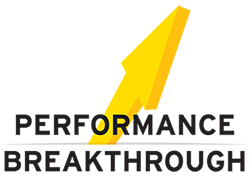This blog post was written by Tammy Kohl of Resource Associates Corporation
Improvement is evolutionary where innovation is revolutionary. “Innovation is about creating breakaway differentiation, it’s about creating superior economic returns and it’s about creating what author Geoffrey Moore describes, as ‘an outcome competitors are either unable or unwilling to match’.” (Peter Lefler founder of The Spruance Group)
In order for a company to achieve innovative ideas the company needs to foster a culture of personal innovation. Every employee, team member, or contributor within your organization can enable innovation. They are living every process, talking with every customer, working on every production line, so they know very clearly what works well and what does not work. And, if asked they can tell the organization how it can be done better! The question becomes what process does your management team have in place to ask your employees what they believe the organization can do better?
Innovative opportunities are constantly squelched by poor organizational goal definition, poor alignment of actions to goals, poor participation in teams, poor monitoring of results, and poor communication as well as access to information. Help your people be part of the solution and contribute to a higher level of organizational success.
In a recent project with an insurance company, a cross functional team was brought together to evaluate, rework and present a low cost, no cost solution to shorten their policy approval process which was currently 13 days. They knew the industry average was 12 days. The team worked together for five days. By Friday afternoon the team was presenting to management a no-cost, reworked process taking the existing process of 13 days down to three days. Once the team was given the objectives they went to work and as a team saved the organization 10 days and a significant amount of money. They did not just present improvement … they innovated the process.
Allowing your employees to contribute means they are participating and taking responsibility for accomplishing goals. It’s important for each team member to have a clear understanding of his/her part in helping the team accomplish its goals. Utilizing employees with different strengths creates high performing and innovative teams. The key to employee contribution and innovation is in creating a culture in which people are encouraged to challenge, question, and try new things.
Creating an innovative culture is not a switch that can be flipped overnight. There may be resistance at first because changing a culture is never easy. However, in this case the change and the results are worth it. Communicate the organization’s goal and objectives and communicate the details of those goals frequently. Put a process in place that offers a safe way for employees to share ideas for improvement and innovation and always provide feedback. Establish cross-functional teams to evaluate important business processes and listen intently to what they have to say. If management stays committed to the cultural change, you will see the insecurity and resistance dissipate fostering some of the best innovate and revolutionary ideas your company may ever have seen.
Tammy A.S. Kohl is President of Resource Associates Corporation. For over 30 years, RAC has specialized in helping businesses achieve sustainable results through management consulting, strategic planning, leadership development, executive coaching and youth leadership. For information on creating a leadership succession plan visit www.resourceassociatescorp.com or contact RAC directly at 800.799.6227.



